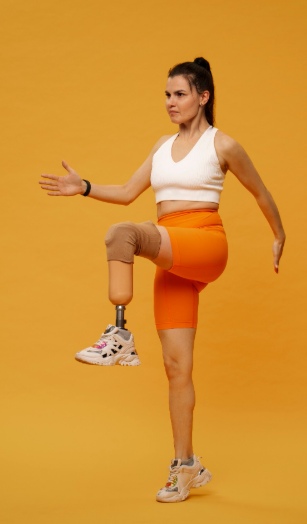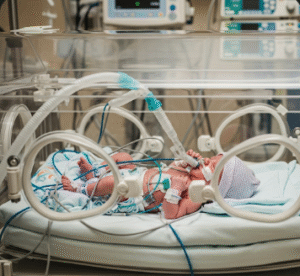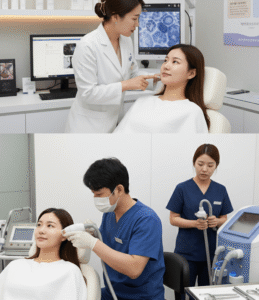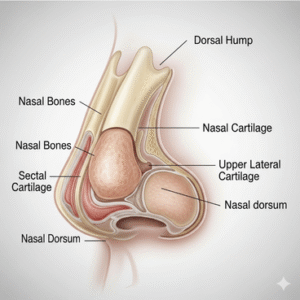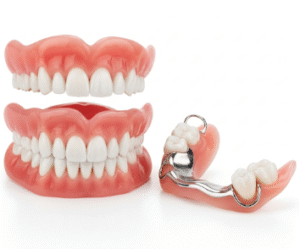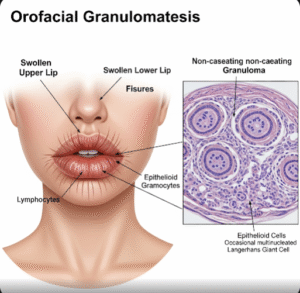What It Is
The fibula free flap is a reconstructive surgery that transfers bone, skin, and blood vessels from the fibula (lower leg bone) to repair complex defects, most commonly in the jaw (mandible), maxilla, or other bony structures. The transferred tissue is completely detached from the leg and reconnected to recipient-site vessels using microsurgery.
This flap is highly valued because the fibula provides strong, reliable bone with good length (up to 25 cm), along with a robust blood supply and optional skin paddle for soft tissue coverage. In Korea, this procedure is widely used in oral and maxillofacial reconstruction after cancer surgery, trauma, or congenital deformities, with advanced planning using 3D imaging and custom plates for precise results.
Why It’s Done
Patients undergo fibula free flap surgery because:
- They have lost part of the jaw or facial bones due to cancer resection, trauma, or infection.
- They need reconstruction that restores both function (chewing, speaking, swallowing) and appearance.
- Long bone defects in the limbs require strong, vascularized bone for healing.
- Previous reconstruction attempts have failed, requiring a durable free flap.
Good candidates include:
- Patients with segmental bone loss in the jaw, face, or limbs.
- Individuals in good health who can undergo major microsurgery.
- Patients motivated for comprehensive rehabilitation, including dental implants after jaw reconstruction.
Alternatives
- Iliac crest free flap: Provides bulkier bone but shorter vascular pedicle.
- Scapula free flap: Useful when more soft tissue is required.
- Alloplastic implants or plates: Can restore contour but lack living bone, increasing long-term complications.
- Bone grafts without vascularization: Suitable only for small defects.
Preparation
Before undergoing fibula free flap in Korea, patients will:
- Have a comprehensive evaluation including CT scans, CT angiography, and 3D planning for defect reconstruction.
- Undergo vascular assessment of the leg to ensure safe fibula harvest.
- Complete routine medical tests and anesthesia clearance.
- Stop smoking and alcohol at least 4 weeks before surgery.
- Prepare for hospital stay and postoperative rehabilitation.
How It’s Done
- Anesthesia: General anesthesia is required.
- Flap harvest: The fibula bone (along with skin and fascia, if needed) is carefully removed while preserving leg stability.
- Transfer: The flap is transplanted to the defect site (commonly the mandible).
- Microvascular anastomosis: Arteries and veins from the flap are connected to recipient vessels using microsurgery.
- Fixation: The bone is shaped and fixed with titanium plates or custom-designed surgical guides.
- Duration: 6–12 hours depending on complexity.
Recovery
- First week: Close monitoring in a microsurgical unit to ensure flap survival. Swelling and discomfort are common.
- Hospital stay: Usually 7–14 days.
- Mobility: Patients can usually walk within a few days, as the leg remains stable even without part of the fibula.
- Functional rehabilitation: Speech therapy, swallowing therapy, or dental rehabilitation may be required.
- Final results: Full healing within 3–6 months, with long-term stability allowing for dental implants in jaw reconstruction.
Possible Complications
- Flap failure due to vascular thrombosis (rare with experienced microsurgeons).
- Partial skin paddle loss or delayed healing.
- Donor site complications such as leg weakness, scarring, or ankle stiffness.
- Infection or bone resorption at the reconstructed site.
- Rare risks: nerve injury or gait disturbance.
Treatment Options in Korea
Diagnosis
Korean reconstructive teams use 3D CT imaging, virtual surgical planning, and rapid-prototyped surgical guides for precise fibula shaping and fixation. Preoperative vascular mapping ensures safe donor site selection.
Medical Treatments
For smaller defects, non-vascularized bone grafts or alloplastic implants may be attempted, but these are less reliable for major reconstructions.
Surgical or Advanced Therapies
- Standard fibula free flap for mandibular and maxillary defects.
- Osteocutaneous fibula flap (bone + skin) for defects requiring both bone and soft tissue.
- Double-barrel fibula flap to restore vertical bone height for dental implant placement.
- Chimeric fibula flaps (bone + muscle + skin) for complex head and neck reconstructions.
Rehabilitation and Support
- Early postoperative physiotherapy for leg strength and mobility.
- Long-term dental rehabilitation with implants for jaw reconstructions.
- Scar care at both donor and recipient sites.
- International patients benefit from Korea’s multidisciplinary teams, advanced microsurgical centers, and multilingual care services.

